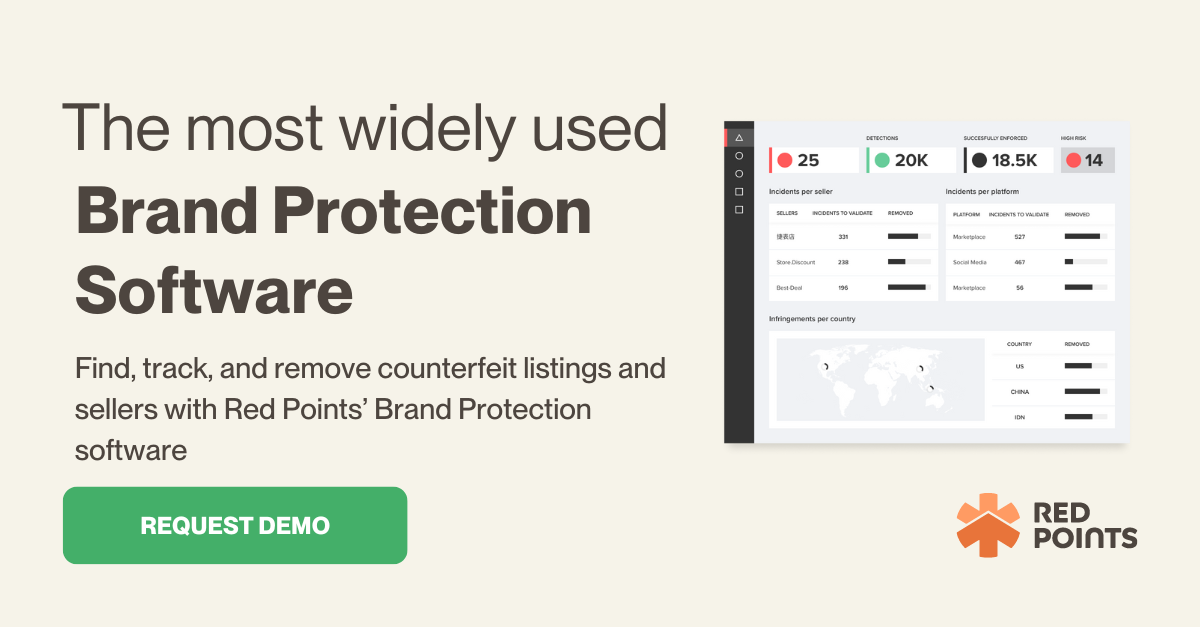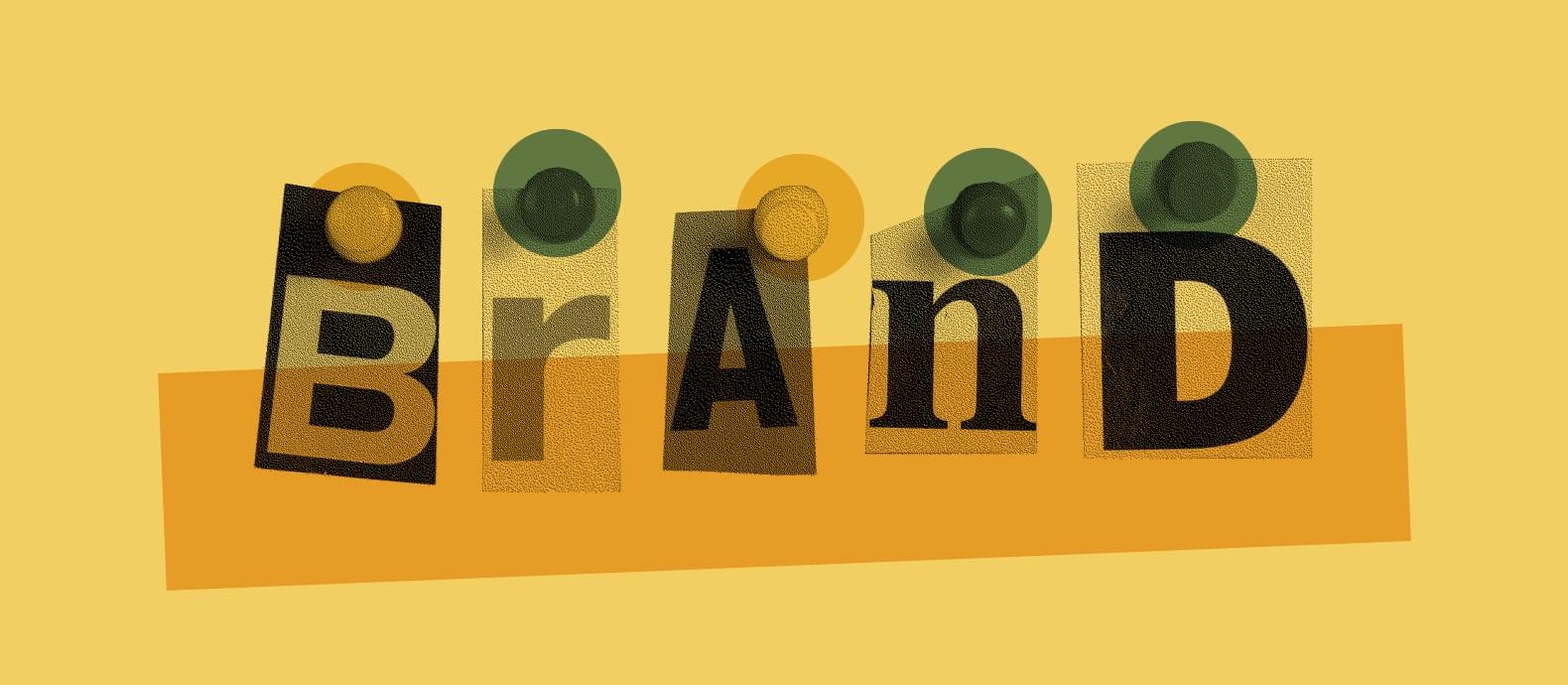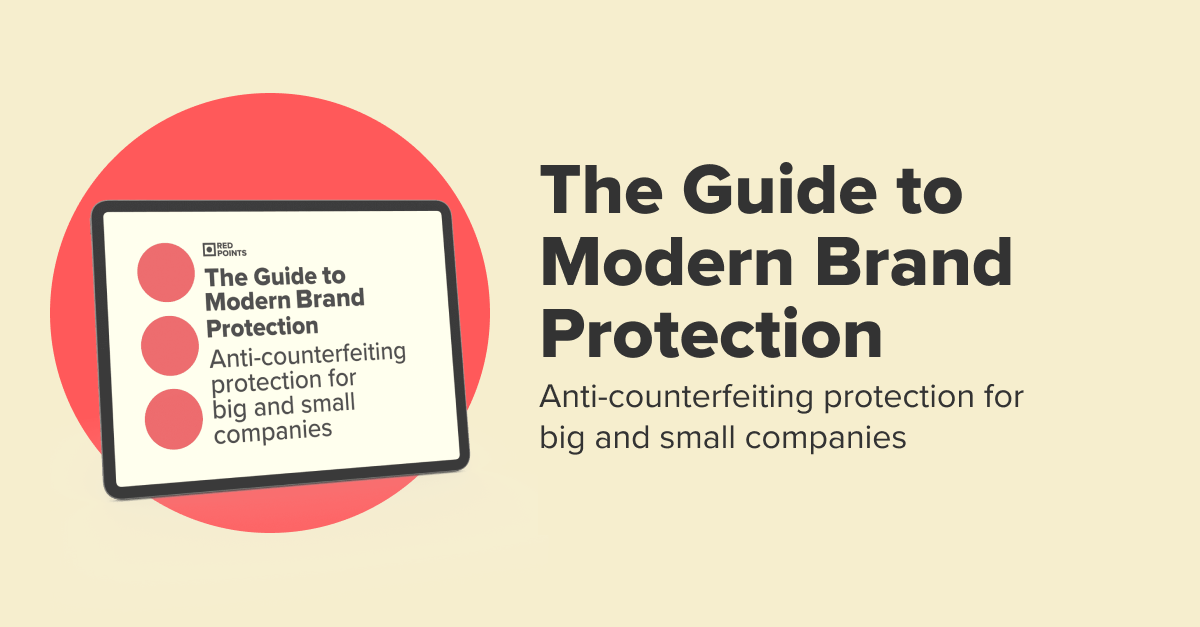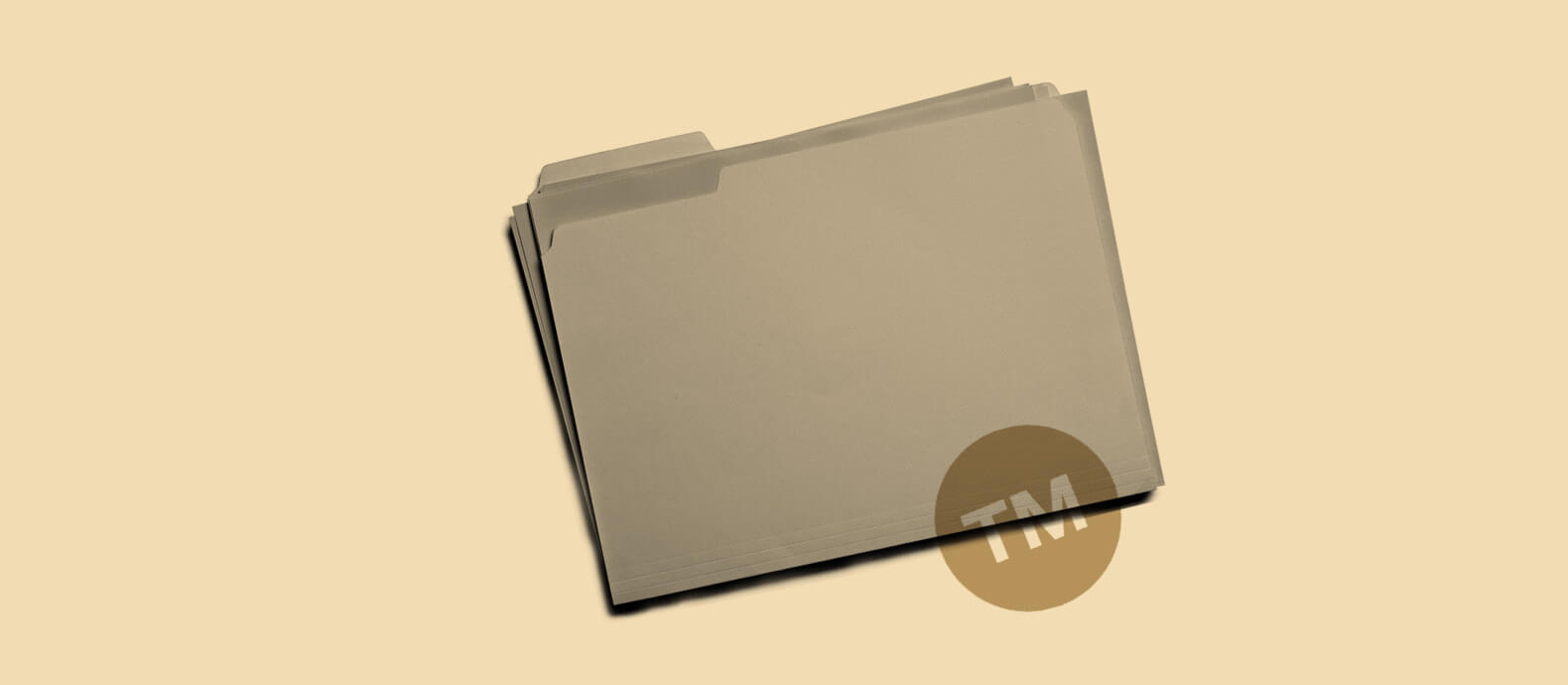The bigger your brand gets, the more vulnerable it will become to counterfeiters, cybersquatters, and other bad actors. If you are only initiating a discussion about brand name protection when there is already an attempt of infringement or theft, that means you are too late.
Any attempt to malign or copy your business name can severely affect your revenue and your brand reputation. That is why you need to protect your brand name proactively. Safeguard it to ensure no one tries to profit off of your hard work.
In this article, we discuss:
- Why is your brand name important?
- What are the different ways scammers can negatively impact your brand name
- How to protect your brand name?
Why is your brand name important?
Your brand name is very often the first element of your brand that customers encounter. As a result, it’s crucial to establish a brand name that is authentic, memorable, and most importantly, distinctive.
It shouldn’t be too similar to an existing brand name or it can create confusion among your target audience. You need a strong brand name to connect with your audience and establish a strong reputation.
But to maintain your brand reputation, you need to constantly protect your brand name and your brand’s intellectual property including trademarks, trade dress, patents, color marks, design rights, and more. Any negative impact on your brand can severely affect the brand’s image, revenue, and overall value.
Before we go into discussing how to protect your brand or company name, it’s important to know about trademarks, patents, and copyrights:
- A trademark is a type of intellectual property that can be a unique symbol, word, phrase, or design that represents a business and/ or its products. It helps distinguish one business from the other.
- A patent safeguards an original invention or technology for a specific period of time. It gives you the right to produce your products without the fear of competition during the duration of the patent.
- A copyright gives you the exclusive right to copy and distribute a creative work for a limited period of time. The creative work can be musical, educational, artistic, or literary.

Different ways scammers can negatively impact your brand name
Cybersquatting and typosquatting
Cybersquatting happens when someone squats on a domain name that should ideally belong to your brand.
Cybersquatters can use the domain to either copy your brand’s website and scam unsuspecting customers, or they could also ask you to pay more money to own the domain now that they have control of it.
For instance, your official brand website may already be registered with a .com or org domain, but a cybersquatter could purchase a domain with your brand name but with a different extension like .co.uk, .site, or .ca.
Similarly, typosquatters purchase domain names with your brand’s name or slogan but spelled incorrectly. This is done to avoid trademark issues.
A customer may mistakenly type in the wrong spelling in the address bar or they may find the fake website on the search results and assume it’s the original website. This wouldn’t just divert traffic from your website but it can also lead to your potential customers falling for scams which will invariably affect your brand reputation.
It will also end up diluting your marketing team’s effort to rank higher on important keywords which can further decrease your marketing ROI.
Phishing scams
Phishing scams have become all too common in the digital space. While some scammers will use your brand’s name with the intention of gaining the personal details of customers, others may even create a whole fake website resembling your brand’s just to install harmful malware into the website visitors’ computers in order to expose them to fraud.
No matter what way the bad actors go with their phishing scams, it all leads to the same consequences — reduced marketing ROI, distress for your customers, and slowly disappearing trust in your brand.
Social media impersonation
Another form of phishing, social media impersonation occurs when bad actors create fake social media pages with a similar business name and layout as your original brand page.
These fake profiles are then used to impersonate your brand, sell counterfeits, direct customers to phishing pages in order to get their personal information, or even download malware on their devices.
Counterfeiting
Counterfeiting is a form of IP infringement that can severely affect your brand reputation. Fake or unauthorized copies of your products can often get sold to unsuspecting customers who believe they are buying the real thing.
But when the quality of the product does not match their expectations (obviously) and customers finally contact the company for warranty claims, it can put your business in a difficult situation and cause severe distress to your customers as well.
In fact, it has been reported that one in five customers boycott a brand after mistakenly buying a counterfeit product of that brand. That means you would be over 20 percent of your potential customers just because there are counterfeits of your products out there.
Brand defamation
In brand defamation, people get paid just to abuse and malign your brand and its products online. They may even subtly suggest unsuspecting potential customers try out another brand instead of yours. In many cases, this is done by competitors to redirect your customers to their websites.
While Amazon takes strict steps to ban any incentivized reviews and you can also monitor the reviews that get published on your official website, monitoring customer reviews on social media can get tricky.
Users with fake profiles can leave scathing reviews in the comment section which can put off many genuine leads who might be thinking about making a purchase with your company.
Copyright piracy
Copyright piracy refers to using copyrighted works without the permission of the creators. It’s important for brands to not only copyright all of their important product designs and visuals but also constantly monitor and protect their copyright.
Counterfeiters can copy your product designs to create fake products for profit. They can also copy copyright images from your official company website to promote fake products and make their illegal product listings seem authentic.
Trademark squatting
Similar to cybersquatters and typosquatters, trademark squatters tend to register trademarks in bad faith. Since trademarks are territorial, you need to file for them separately in every country where you want to have your trademarks and company name protected.
Trademark squatters can register your brand’s trademark in a foreign country where you are still yet to register. It is done either to extort more money from you for transferring the trademark back to you or to sell their own products under your own brand name.

6 steps to protect your brand name
1- Register your trademark
When you have your brand name and products trademarked, you can sue anyone who tries to use them without prior permission from you.
Here’s how you can go about registering your trademarks:
- Find out if the name isn’t already trademarked and in use in the same domain and category as your business. Since trademarks are territorial, there are different trademark databases for every region. For instance, the US has the USPTO and the European Union has EUIPO
- If the product or company name already exists, you can consult with a trademark attorney to see if your product is different enough to warrant usage with the same name
- Once you submit your application with your trademark attorney, it can take anywhere between a few months to a year to get the trademark registered.
2- Copyright your brand aesthetics, product images, and even brand colors
Instead of fixating too much on just trademarks and patents, take a holistic approach to brand name protection. Like trademarks, patents are also region-restricted which can create problems for growing companies. After all, it can take a lot of time to file for patents and trademarks in every region.
On the other hand, copyright protection for your company name stays valid in over 100+ countries with a single filing due to the Berne Convention.
You can copyright your brand aesthetic, product images, and brand colors to ensure counterfeiters cannot use your brand’s visual identity in any way. This will also help avoid situations where counterfeiters try to sell fake products by using your brand’s official product images.
3- Protect your brand internationally
Once you protect your brand name, its products, and your patented technology domestically, you should take the process international as soon as possible.
Remember that just because your brand primarily sells in one country doesn’t mean that counterfeiters in another country won’t copy you for profits. With the power of the internet and the need to avoid any litigation, counterfeiters are also getting smarter by the day.
You can start protecting your business name by registering for trademarks in countries where the majority of your counterfeit products originate.
You can also use agreements like the Madrid Protocol to register trademarks in multiple regions together. The Madrid Protocol is an international system that helps you obtain trademark protection for your company and brand in a number of countries that support the protocol, all with a single application. Currently, there are over 117 countries listed under the Madrid Protocol.
4- Protect your own brand name via PPC and organic
There is nothing more disheartening than seeing cybersquatters and fake websites of your brand rank higher in search results than your original brand website.
To avoid this from happening, you should pay for PPC ads to rank your brand name on search engines for all the important keywords, even if you are already organically ranking for those particular keywords.
It will improve your real estate space on the search engine results and reduce the chances of the traffic getting diverted from your website to the counterfeiter’s website.
Many counterfeiters use blackhat SEO to rank higher in search engine results. But remember that blackhat SEO isn’t a long-term strategy and there is only so long they can rank their fake listings on high search engine positions before getting reported or taken down.
That is why you should always stick to white-hat SEO methods. Of course, they won’t give you immediate results, but they can help give you long-term organic traffic.
You should also proactively file UDRP complaints against cybersquatters to shut down the fake websites or transfer them back to you before they can cause any long-term damage to your brand name.
5- Monitor your Intellectual Property usage 24/7
No matter how many steps you take to protect your brand and company, there will always be some bad actors trying to take advantage of your brand name. That is why it is crucial to constantly monitor your intellectual property 24/7 and shut down any fake listings or websites as soon as they show up.
The longer you wait, the more opportunities bad actors will have to damage your brand name and make profits.
6- Enforce IP infringements fast with the help of Red Points
From filing trademarks to monitoring IP online all the time, it can be a lot to handle when you are already busy building your brand. Red Points makes the entire process easy with its Brand Protection Software which can automatically find, track, and remove counterfeit listings online.
The software offers an always-on brand protection cover and monitors online platforms 24/7 looking for any suspicious listings.
The tool can help you in:
- Identifying what is high-risk and prioritizing top infringing regions, platforms, and sellers.
- Taking down any infringements automatically.
- Crawling the internet with bot-powered search to discover any potential infringements.
- Grouping IP infringements together so you can act on them all at once.
- Constantly monitoring listings and sellers after enforcement to ensure they don’t pop up again.
- Monitoring real-time data to get a better understanding of brand protection efforts.
Next steps in brand protection
Even if you are in the early stages of your business, it is crucial to protect and monitor your trademark as you scale to make sure you always have your grounds covered. Protecting your brand name means protecting your brand’s future value. Request a demo to see how Red Points can help protect your company name.






